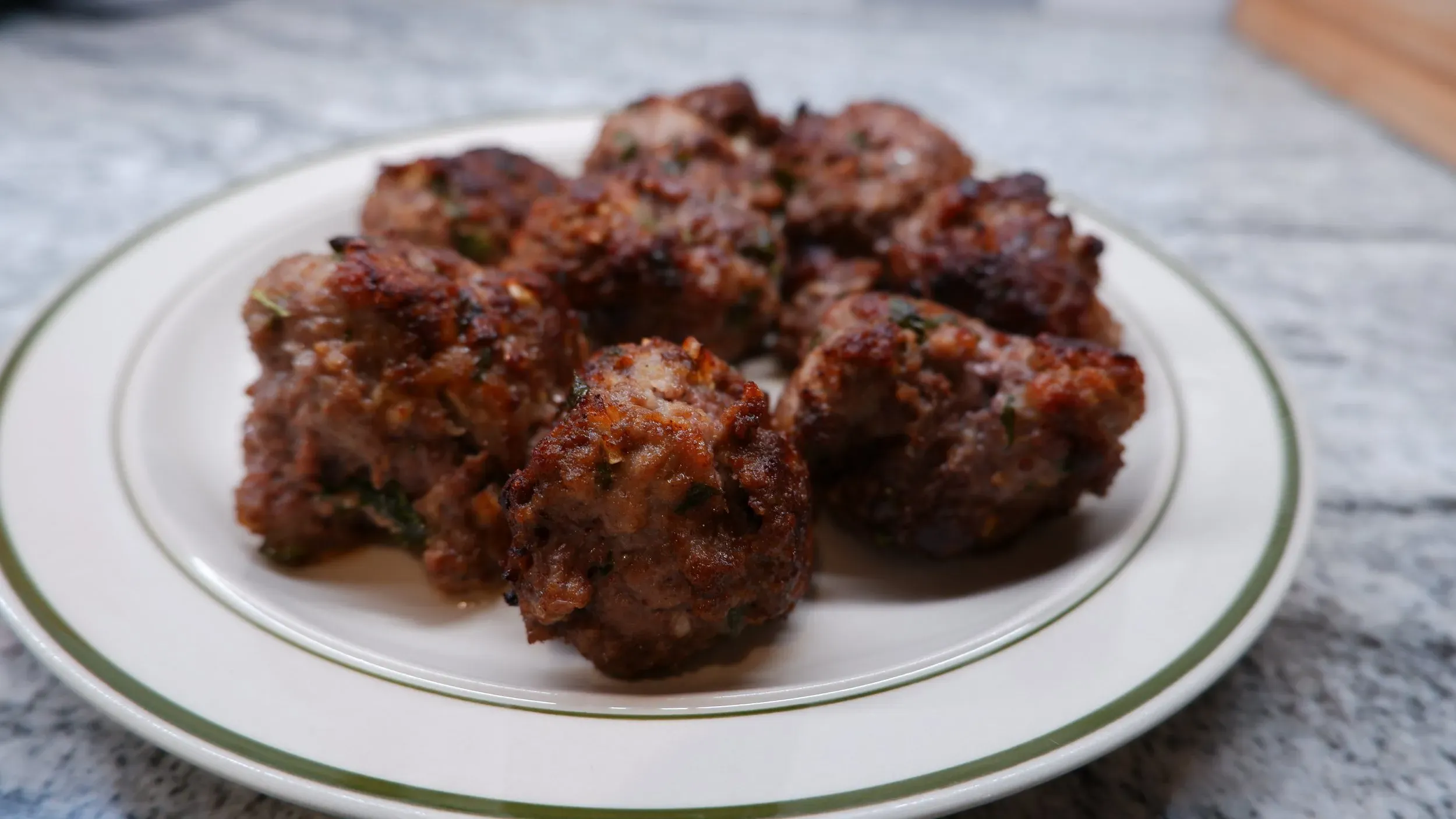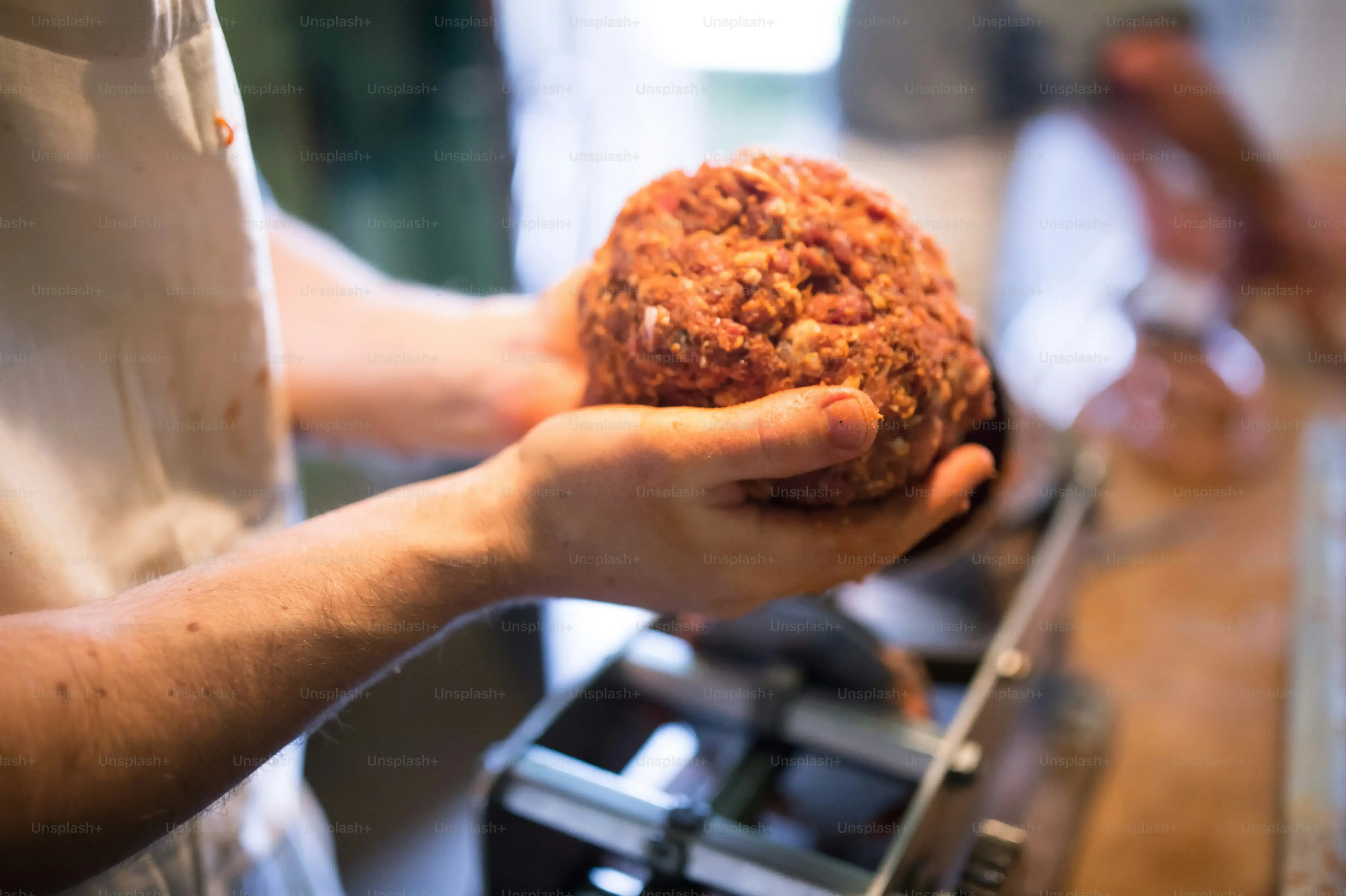Table of Contents
Alright, let's talk meatballs. Everyone's got an opinion on what makes the perfect one – tender, flavorful, holds together but isn't a brick. And then there are celebrity chefs, each claiming their version is the bomb-dot-com. Enter Guy Fieri. The Mayor of Flavortown himself. Known for big flavors and often, well, *interesting* takes on classics. So, naturally, we had to see what his deal was with the humble meatball.
Cracking the Code: What Makes a Great Meatball?

Cracking the Code: What Makes a Great Meatball?
Avoiding the Meatball Mishaps
so before we even dive into Guy Fieri's take, let's talk about the battlefield of bad meatballs. You've probably encountered them. The ones that are dry as a desert boot, crumbling into sad little pebbles in your sauce. Or maybe the ones that are so dense and rubbery, you feel like you're chewing on a hockey puck. And don't even get me started on the flavorless ones. They just sit there, inert lumps of protein, adding nothing to the pasta party.
Getting a meatball wrong is surprisingly easy. Too much breadcrumb, not enough moisture, overmixing the meat until it's tough, or cooking them too aggressively can all lead to disaster. It's a delicate balance between getting them to hold together and keeping them tender and juicy. It's not just about throwing meat and stuff in a bowl and rolling it up; there's a bit of finesse involved if you want something truly memorable.
The Pillars of a Perfect Meatball
So, what are we aiming for? A great meatball should be tender enough to yield easily but firm enough to hold its shape in sauce. It needs moisture – that's key. Fat from the meat, maybe some liquid added in, like milk or broth. Flavor comes from good seasoning, obviously, but also from the mix of meats (pork often adds crucial fat and flavor to beef) and aromatics like garlic and onion (cooked gently first, please, so you don't get raw onion crunch).
The binder is important too. Breadcrumbs, often soaked in milk or water, help lighten the texture and soak up juices. Eggs help hold it all together. And mixing? You want to mix just enough to combine everything, but not so much that you develop the proteins and make the meatballs tough. Think gentle hands, not a stand mixer on high speed. It's like building a delicate structure, not mixing concrete.
- Use a mix of meats (beef and pork is classic for a reason).
- Include a binder, like breadcrumbs soaked in liquid.
- Don't skimp on fat – it adds moisture and flavor.
- Cook aromatics (like garlic and onion) before adding to the mix.
- Mix gently to avoid tough meatballs.
- Season generously, but taste your mix if possible (carefully!).
Taking on Guy Fieri's Italian Meatball Recipe

Taking on Guy Fieri's Italian Meatball Recipe
First Impressions and Expectations
So, you've seen the man, you know the brand: big flavors, loud presentation, and a general air of culinary controlled chaos. Tackling theguy fieri italian meatball recipefelt less like following a traditional nonna's guide and more like preparing for a high-octane cooking demo.
Would it be overloaded with ingredients? Packed with unexpected twists? The recipe, as found floating around the internet (and let's be real, Guy's recipes live everywhere), seemed relatively straightforward on the surface.
But with Guy, you always brace yourself for a little something extra, maybe a hidden instruction or a call for a metric ton of garlic.
My main question going in was whether this recipe prioritized flash over substance, or if there was some genuine Italian-American comfort food wisdom buried under the Flavortown lingo.
Sizing Up the Ingredients and Steps
Diving into the specifics of theguy fieri italian meatball recipe, a few things jumped out immediately. The recipe calls for a mix of beef and pork, which is a solid start – that pork fat is non-negotiable for moisture and flavor.
Panko breadcrumbs make an appearance, soaked in milk, which is a common technique to keep things light. No stale bread here, which is a minor deviation from some old-school methods but totally acceptable for texture.
The inclusion of Parmesan (or Grana Padano, if you're feeling fancy and making substitutions like we did) adds that necessary salty, umami kick.
Garlic and parsley are standard players, but the quantities and method of incorporating them would be telling.
The cooking method involves searing the meatballs first, then finishing them off. This two-step approach is crucial for developing a good crust while ensuring the inside cooks through without drying out.
It wasn't anything wildly revolutionary on paper, which was almost... surprising?
- Recipe uses beef and pork mix.
- Calls for Panko soaked in milk.
- Includes Parmesan cheese.
- Requires searing before finishing.
- Seems less "off the hook" than expected initially.
Inside the Kitchen: Making Guy's Meatballs StepbyStep

Inside the Kitchen: Making Guy's Meatballs StepbyStep
Mixing, Rolling, and the Great Meat Debate
Alright, so you've got your ingredients laid out. The recipe calls for soaking the panko in milk, which is step one. Don't skip this; it's what keeps them from turning into dense little rocks. While that's happening, you combine the ground beef and pork. This is where things get tactile. You add the soaked panko (squeeze out any excess milk, but not *all* of it), the cheese, the parsley, garlic, salt, and pepper. Guy's recipe is fairly generous with the seasonings, which is a good sign.
Now, the critical part: mixing. You want to bring everything together gently. Think of it like folding laundry, not kneading dough. Overmixing develops the protein, making the meatballs tough. Use your hands; you can feel when it's just combined. Then comes the rolling. Aim for consistent size so they cook evenly. About golf-ball size seems standard and works well for cooking time.
Searing for Glory and Finishing Strong
Next up is the sear. This is non-negotiable for flavor and texture. Get your pan hot with some oil – medium-high heat usually does the trick. You're not cooking them through here, just getting a nice brown crust all over. This caramelization adds a layer of depth that you just don't get from poaching them straight in sauce. Don't crowd the pan; cook in batches if you need to. Giving them space ensures they sear, not steam.
After they're nicely browned on all sides, Guy's recipe suggests finishing them off. Some versions suggest the oven, others straight into the sauce. We opted for finishing them in a simmering tomato sauce. This allows them to cook through gently and soak up all that good sauce flavor. It's a classic method for a reason. Keep the sauce at a gentle simmer; a rolling boil can break them apart.
- Soak panko thoroughly in milk, but drain excess.
- Mix ingredients gently by hand.
- Avoid overmixing to prevent toughness.
- Roll meatballs to a consistent, manageable size.
- Sear in hot oil until well-browned on all sides.
- Cook in batches if necessary to avoid crowding.
- Finish cooking gently, either in the oven or simmering sauce.
The Final Bite: Rating Guy Fieri's Italian Meatballs & FAQs

The Final Bite: Rating Guy Fieri's Italian Meatballs & FAQs
How Did They Actually Taste?
After all the mixing, rolling, and searing, it was time for the moment of truth: the taste test. We dropped these bad boys into a simmering pot of simple tomato sauce and let them hang out for a bit to soak up the goodness. The first bite? Solid. Not revolutionary, but definitely competent. The mix of beef and pork came through, providing good flavor and, crucially, moisture. They weren't dry, which is a major win in the meatball world.
The texture was decent. They held together well in the sauce – no crumbling disasters here – but weren't overly dense. You could tell the soaked panko did its job. Seasoning was on point; Guy definitely doesn't shy away from salt and pepper, which is appreciated. There was a slight sweetness, likely from the milk-soaked panko, that balanced the savory notes. Overall, they were flavorful, moist, and had a pleasing texture. A good, reliable meatball, if not mind-blowing.
Is This Recipe a Keeper?
So, where does theguy fieri italian meatball recipeland on the spectrum? It's easy to follow, uses standard ingredients, and produces a consistently good result. For someone looking for a straightforward, no-fuss meatball that delivers on flavor and texture without requiring advanced culinary degrees, this recipe fits the bill. It's not the most complex or deeply flavored meatball I've ever had, but it's definitely not the worst either. It's a solid choice for a weeknight pasta dish or feeding a crowd.
Think of it as the reliable workhorse of meatball recipes. It gets the job done effectively and efficiently. If you're expecting some sort of mind-altering, transcendent meatball experience, you might need to look elsewhere. But if you just want a good, honest meatball that won't fall apart and tastes like, well, a good meatball, Guy's got you covered here. It's a 7 out of 10 in my book – perfectly respectable.
Common Questions About Guy's Meatballs
We've covered the taste and the process, but a few common questions pop up when people tackle theguy fieri italian meatball recipe. Can you make them ahead? Absolutely. Form the meatballs and store them raw in the fridge for a day, or freeze them on a baking sheet until solid, then transfer to a freezer bag for longer storage. Thaw them overnight in the fridge before searing and cooking.
What about substitutions? We swapped Parmesan for Grana Padano with no issues. You could likely adjust the meat ratio slightly, but keep that pork fat in there. As for cooking methods, while searing and finishing in sauce is classic, you could potentially bake them entirely after searing, though they won't absorb as much sauce flavor. Just ensure they reach an internal temperature of 160°F (71°C). Don't overthink it too much; meatballs are forgiving within reason. Just remember the basics: good meat, good seasoning, gentle mixing, and don't dry 'em out.
The Verdict on Guy's Meatballs
So, after getting our hands messy with theguy fieri italian meatball recipe, what's the final word? They're solid. Competent. They held together, had decent flavor, and weren't a pain to make. You won't be weeping tears of joy over some transcendent meatball experience, but you also won't be throwing them out. It's a reliable recipe if you're looking for a straightforward meatball that gets the job done. Not exactly revolutionary, but sometimes, getting the job done is precisely what you need. Consider it a decent pit stop on the culinary highway, but maybe not the destination.